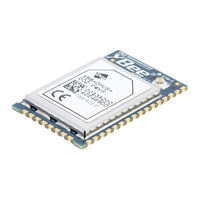Digi XBee 868LP Manuals
Manuals and User Guides for Digi XBee 868LP. We have 1 Digi XBee 868LP manual available for free PDF download: User Manual
Digi XBee 868LP User Manual (217 pages)
Radio Frequency (RF) Modules
Brand: Digi
|
Category: Control Unit
|
Size: 4 MB
Table of Contents
Advertisement
Advertisement
